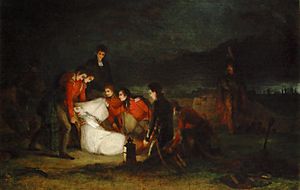John Moore (British Army officer) facts for kids
Quick facts for kids
Sir John Moore
|
|
|---|---|
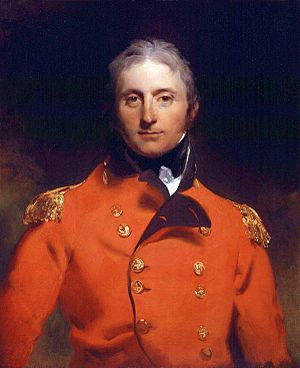
Moore, oil on canvas portrait by Thomas Lawrence
|
|
| Born | 13 November 1761 Glasgow, Scotland |
| Died | 16 January 1809 (aged 47) A Coruña, Province of A Coruña, Spain |
| Allegiance | United Kingdom |
| Service/ |
British Army |
| Years of service | 1776–1809 (DOW) |
| Rank | Lieutenant-General |
| Battles/wars | |
| Awards | Order of the Bath |
| Other work | Whig MP for Lanark Burghs |
Lieutenant-General Sir John Moore (born 13 November 1761 – died 16 January 1809) was a very important officer in the British Army. People also knew him as Moore of Corunna. He is famous for two main things. First, he made big changes to how soldiers were trained. Second, he bravely died in the Battle of Corunna in Spain. In this battle, he stopped a French army during the Peninsular War.
Contents
Early Life and Adventures
John Moore was born in Glasgow, Scotland. His father was a doctor and writer. When John was just 11 years old, he went on a "grand tour" with his father. This was a long trip across Europe. They visited France, Italy, and Germany. He even lived in Geneva for two years, where he continued his studies.
Joining the Army and Early Battles
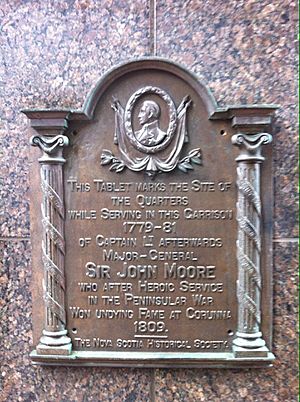
In 1776, when he was 15, John Moore joined the British Army. His first real fighting was in 1778 during the American War of Independence. He was a lieutenant in a new regiment. From 1779 to 1781, he was stationed in Halifax, Nova Scotia.
In 1779, he showed great bravery during the Penobscot Expedition in what is now Maine. A small group of British soldiers, including Moore, held off a much larger American force. They kept fighting until more British soldiers arrived to help.
A Member of Parliament
After the American War, Moore returned to Britain in 1783. In 1784, he was elected to Parliament. This meant he helped make laws for the country. He kept this job until 1790.
Fighting in Corsica and the West Indies
In 1787, Moore became a Major. His unit was sent to the Mediterranean Sea in 1791. He fought in the invasion of Corsica and was hurt during the Siege of Calvi. He was then made a Colonel.
Later, in 1796, Moore went to the West Indies. He played a big part in helping Britain take back Saint Lucia. He bravely recaptured a fort called Fort Charlotte. The soldiers who fought with him were honored for their courage. Moore stayed in charge of the British soldiers there until he got sick with yellow fever and had to go back to Britain.
Moore in Ireland
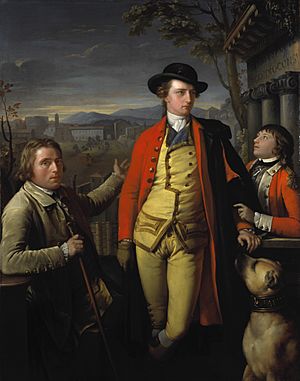
In 1798, Moore became a Major-General. He helped stop the Irish Rebellion of 1798. His quick actions helped turn the battle at Battle of Foulksmills on June 20. He also took back Wexford town, possibly stopping it from being destroyed.
New Ways to Train Soldiers
In 1799, Moore led soldiers in the Helder Expedition. He was seriously injured during this campaign. After he recovered, he led the 52nd regiment during the British campaign in Egypt against the French.
In 1803, Moore returned to Britain. He was put in charge of a group of soldiers at Shorncliffe Army Camp. Here, he created a new and better way to train soldiers. He taught them new drills and how to move quickly in battle. This training helped create the famous Light Infantry, known for being fast and skilled. People said Moore believed that the best soldiers were made by bringing out the best in them, both physically and mentally.
Defending Britain from Napoleon
When it looked like Napoleon was planning to invade Britain, Moore was put in charge of defending the coast. This was from Dover to Dungeness. He had special towers called Martello Towers built. He had seen similar strong towers in Corsica. He also started the digging of the Royal Military Canal to help defend the land. Moore also helped get about 340,000 volunteers ready to defend the country if an invasion happened. In 1804, Moore was honored as a Knight. In 1805, he became a Lieutenant-General.
In 1806, he went back to fighting in the Mediterranean. Then, in 1808, he went to the Baltic Sea to help the Swedish. After some disagreements, he was sent home. Soon after, he was ordered to Portugal.
The War in Spain and His Last Battle
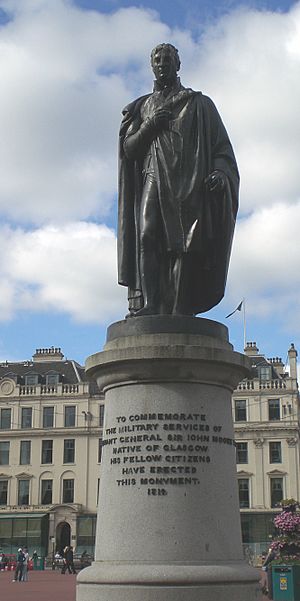
In 1808, Moore took command of the British forces in Spain and Portugal. This was after other generals were called back to answer questions about a peace agreement. When Napoleon arrived in Spain with a huge army of 200,000 men, Moore made a clever plan. He led his army on a long retreat, drawing the French army northwards. This gave his soldiers time to reach the ports of A Coruña and Vigo to be picked up by ships.
Moore set up a strong defensive position on hills outside A Coruña. He was fatally wounded during the Battle of Corunna. Even as he was dying, he remained calm. He told his friend, Colonel Paul Anderson, "You know, I always wished to die this way, I hope the people of England will be satisfied! I hope my country will do me justice!" He asked about his friends and his mother. He then died shortly after.
Moore was buried quickly, wrapped in a military cloak, within the town's defenses. His burial was remembered in a famous poem called "The Burial of Sir John Moore after Corunna." The poem starts:
Not a drum was heard, not a funeral note,
As his corse to the rampart we hurried;
Not a soldier discharged his farewell shot
O'er the grave where our hero we buried.
It ends with these lines:
Slowly and sadly we laid him down,
From the field of his fame fresh and gory;
We carved not a line, and we raised not a stone,
But we left him alone with his glory.
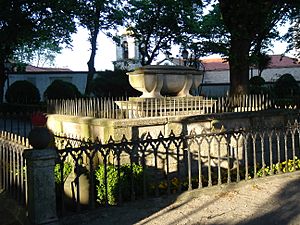
When the French army later took the town, their leader, Marshal Soult, ordered a monument to be built over Moore's grave. The monument was rebuilt and made stronger in 1811.
Today, Sir John Moore is remembered in many places. There is a statue of him in George Square in his hometown of Glasgow. In England, there is a monument to him in St Paul's Cathedral. Schools and streets are also named after him, like Sir John Moore Avenue in Hythe, Kent.
See also
 In Spanish: John Moore para niños
In Spanish: John Moore para niños


